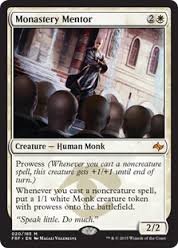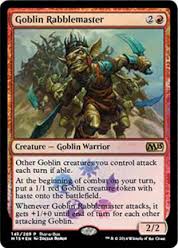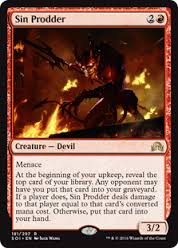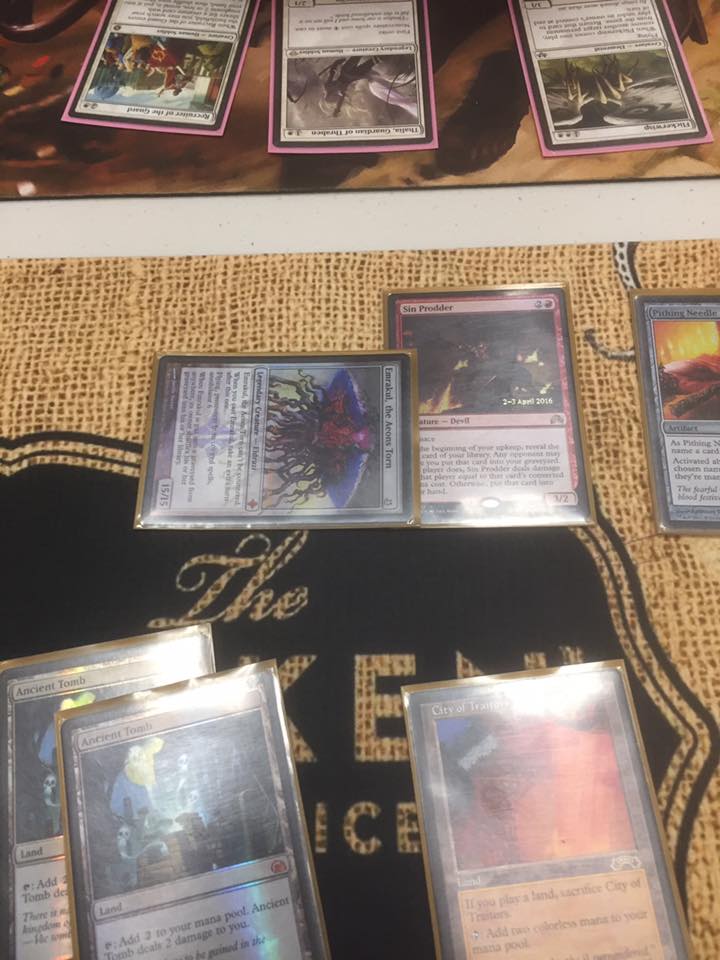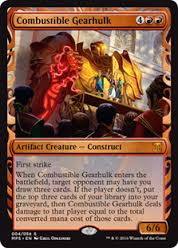Over the past three weeks I have been testing a new sideboard for one of my favorite decks, Sneak & Show. Over that time I piloted the deck to a combined tournament match record of 10-5. Not a ground shaking performance by any means, but it was enough success to show me that we might end up with a gem after a bit of polish. Another good sign was that two of those match wins came against Death & Taxes, a deck which has historically been Sneak & Show’s greatest foe.
Before I ramble on for much longer, let’s take a look at the list.
Sneak & Show
Combo (17)
4 Show and Tell
4 Sneak Attack
4 Griselbrand
3 Emrakul, the Aeons Torn
1 Ashen Rider
1 Omniscience
Spells (25)
4 Force of Will
3 Spell Pierce
1 Flusterstorm
4 Brainstorm
4 Ponder
1 Preordain
2 Sensei's Divining Top
2 Jace, the Mind Sculptor
4 Lotus PetalLands (19)
3 Ancient Tomb
2 City of Traitors
2 Island
1 Mountain
3 Volcanic Island
4 Scalding Tarn
4 Polluted Delta
Sideboard (15)
3 Sin Prodder
1 Sulfur Elemental
1 Combustible Gearhulk
3 Blood Moon
2 Sudden Shock
1 Kozilek's Return
2 Grafdigger’s Cage
1 Surgical Extraction
1 Pithing Needle
The sideboard is incredibly important for a deck like Sneak & Show. As an explosive combo deck, Sneak & Show is heavily favored in game one of a match. Games two and three tend to be much trickier, as our opponents are able to board in powerful hate cards to shut down our combo. Cards like [casthaven]Containment Priest[/casthaven], [casthaven]Karakas[/casthaven], [casthaven]Ensnaring Bridge[/casthaven], and as I learned this weekend, [casthaven]Seal of Removal[/casthaven], are all cards that can ruin our day. This means our own sideboard needs to contain an effective counter to their hate.
While we have answers to some of the more common sideboard hate, such as [casthaven]Sudden Shock[/casthaven] for [casthaven]Containment Priest[/casthaven] and [casthaven]Pithing Needle[/casthaven] for [casthaven]Karakas[/casthaven]. The great diversity of Legacy means that it is pretty much impossible to be prepared for absolutely everything our opponents can throw at us. As such, I have come to the conclusion that the best method is to be proactive, to have a sideboard plan that provides an alternate path to victory that our opponents will not be prepared for. After all, the best defense is a superior offense.
[casthaven]Young Pyromancer[/casthaven] has achieved some success in Omnishow decks, fulfilling the role described above. The theory being that our opponents, when faced with a (technically) creatureless combo deck game one, will side out their useless removal spells in games two. This clears the way for [casthaven]Young Pyromancer[/casthaven] to run unopposed, popping out 1/1 tokens that can win the game even if their opponent can disrupt their combo. Unfortunately, Sneak & Show has a much lower density of instants and sorceries when compared to Omnishow builds. This means that [casthaven]Young Pyromancer[/casthaven] cannot reliably achieve a critical mass of tokens able to win the game on their own.
My first experiment in finding a suitable win condition for the sideboard revolved around [casthaven]Monastery Mentor[/casthaven]. The Fate Reforged mythic was an ideal alternate threat. Compared to [casthaven]Young Pyromancer[/casthaven], which only triggers off of instants or sorceries, [casthaven]Monastery Mentor[/casthaven] was much easier to activate. Combined with fast mana and repeated castings of [casthaven]Sensei’s Divining Top[/casthaven] to trigger the Mentor, I was easily able to achieve a critical mass of tokens and win the game. What I found however, was that the Mentor put considerable strain on my mana base. What is more, I could no longer play one of the most powerful sideboard cards, [casthaven]Blood Moon[/casthaven]. With mana greedy BUG decks and various flavors of [casthaven]Dark Depths[/casthaven] decks increasing in popularity, giving up [casthaven]Blood Moon[/casthaven] was not a sacrifice I was willing to make. I was back to the drawing board to try and find a threat in the deck’s natural colors of Red and Blue.
[casthaven]Goblin Rabblemaster[/casthaven] was my next attempt. I could write an entire article on why [casthaven]Goblin Rabblemaster[/casthaven] does not fit in the role, however I am running out of space so I will keep it brief. Rabblemaster failed in every aspect of testing. At its best it was used as a chump blocker to buy me one more draw step. Stay away at your own peril.
While searching for a new card to test, a local player came to my aid with the suggestion of [casthaven]Sin Prodder[/casthaven]. This overlooked bulk rare has performed exceptionally in the line of duty. Able to be cast on turn one, or two, with the help of mana acceleration, [casthaven]Sin Prodder[/casthaven] slots in perfectly to the deck’s curve. As a 3/2 with menace, the little devil is able to chunk our opponents life total in combat while they scramble to put up defenses. Often times I found my opponent was forced to risk losing multiple creatures by double blocking the [casthaven]Sin Prodder[/casthaven] in an attempt to slow the bleeding. This allowed me to set up some particularly brutal blowouts with a little help from [casthaven]Sudden Shock[/casthaven].
The real power of [casthaven]Sin Prodder[/casthaven] comes from its triggered ability. It is often described as a reverse [casthaven]Dark Confidant[/casthaven], with the downside of giving your opponent the choice to pay life to send the extra card to your graveyard. This is not much of a downside though in this particular build. Including lands, the average converted mana cost of spells in this deck is 3.09. This average casting cost only trends upwards post board. That means on average [casthaven]Sin Prodder[/casthaven] is going to either draw you an extra card, or do three points of damage to our opponents face. When we add [casthaven]Sensei’s Divining Top[/casthaven] into the mix, we start making our own luck and cause our opponents to have nothing but losing choices.
Over the course of three matches in which I had a [casthaven]Sin Prodder[/casthaven] in play, I was able to do a combined total of 57 damage solely with its triggered ability. Even when I got unlucky and I revealed a land off the top, I was still happy to be able to dig deeper into my library. [casthaven]Sin Prodder[/casthaven] was the MVP of my tournament, I can’t wait to get some more testing in with him.
The Spicy…15th?
[casthaven]Combustible Gearhulk[/casthaven] made an appearance this weekend as well. A solid top end threat, not many are able to stand up to this 6/6 First Strike beast. Its rules text might as well say “draw three cards when this comes into play.” Not a single opponent was willing to risk taking the damage knowing that an Emrakul or [casthaven]Griselbrand[/casthaven] could be hiding under the surface. The real reason this made the sideboard is the ability to hard cast it quickly with all the mana acceleration. Unfortunately, I did find myself staring at two [casthaven]Ancient Tombs[/casthaven], a [casthaven]Lotus Petal[/casthaven], an [casthaven]Island[/casthaven], and a sad Gearhulk stuck in my hand on more than one occasion. As such, I think I am going to experiment with a [casthaven]Wurmcoil Engine[/casthaven] as an easier-to-cast replacement.
I hope you all enjoyed today’s article, and be sure to let me know if you have your own particular spice for Sneak & Show’s sideboard.
Jerry Mee is a Boston Native who has been playing Magic since Onslaught Block. Primarily a Legacy player, he cohosts the weekly Leaving a Legacy Podcast found on Mtgcast.com. He can be reached on Twitter at @Jmee3rd


